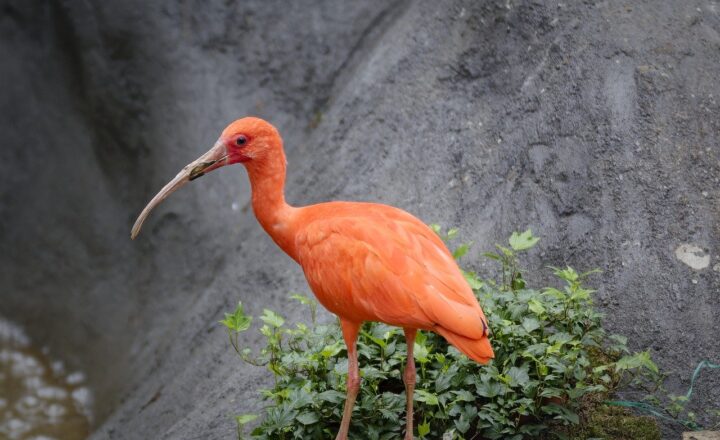
The Amazon River is not just the longest river in South America; it is also recognized as the largest river in the world by discharge volume of water. Stretching over 4,345 miles, it meanders through the lush jungles of the Amazon rainforest, hosting an incredible diversity of life and natural beauty.
Understanding how the Amazon River achieved this status involves exploring its unique geographical features, the environmental factors contributing to its vastness, and its significance in the global ecosystem.
1. The Historical and Geographical Context
The origins of the Amazon River can be traced back millions of years. The river began to take shape around 11 million years ago during the uplift of the Andes Mountains, which reconfigured the landscape of South America. The dramatic rise of the Andes caused a significant diversion of ancient river systems, funneling immense amounts of water into what is now the Amazon basin.
The geographical footprint of the Amazon River includes its tributaries, which feed into it, resulting in an expansive drainage basin that covers around 2.7 million square miles across Brazil, Peru, Colombia, and several other countries. The river’s sheer size is unmatched, and its network of tributaries, with names like the Madeira, Tapajós, and Xingu, contribute to its immense discharge.
These tributaries allow the river to transport sediment and nutrients over vast distances, enriching the surrounding ecosystems. This dynamic water system is a crucial element that helped the Amazon expand and retain its status as the largest river in the world.
2. The Amazing Discharge Volume
The measurement of a river’s size is often determined by its discharge volume, i.e., the amount of water it carries. The Amazon River boasts an astounding average discharge of approximately 209,000 cubic meters per second. To put this into perspective, it is more than the next seven largest rivers combined.
One of the vital factors that contribute to the Amazon’s incredible discharge is its basin’s rainfall. The region receives enormous amounts of rain, often exceeding 10 feet annually in certain areas, primarily due to the tropical climate. The rainforest acts like a sponge, soaking up rainfall and thereby facilitating higher river flows.
The Amazon River is also seasonal, with two distinct periods: the high water season and the low-water season. During the high-water season, which occurs from December to May, the river swells significantly and can rise up to 40 feet, flooding surrounding areas and creating a unique ecosystem. This seasonal variation aids in the river’s ability to manage water flow throughout the year.
3. The Biodiversity of the Amazon Basin
The Amazon River and its surrounding rainforest comprise one of the richest ecosystems on the planet. This diversity is crucial for the river’s health and its global importance. The river is home to over 2,200 species of fish, including the infamous piranha and the majestic Amazonian manatee. Many of these species can only be found in these waters, showcasing the river’s unique ecological standing.
Besides fish, the Amazon basin hosts hundreds of mammals, birds, reptiles, and amphibians, many of which are endemic, highlighting the area’s significant biodiversity. This sustains local communities, supports agriculture, and serves as a vital source of resources.
The plants surrounding the river, including towering trees and countless smaller flora, also play an essential role in regulating the environment and protecting biodiversity. The interplay between the river and its ecosystem is a critical element in maintaining balance among the earth’s resources, confirming the Amazon’s essential place in our world.
4. Cultural and Economic Significance
The Amazon River is integral not only for its ecological ramifications but also for its cultural and economic significance. The river serves as a primary transportation route for millions of people living in the surrounding regions who rely on it for their livelihoods. Indigenous communities have thrived along the river for centuries, developing a deep cultural connection that is entwined with the natural resources available to them.
Agriculture, fishing, and tourism are just a few industries that depend on the river. The sustainable management of these resources is critical, as they contribute significantly to local economies and help maintain livelihoods for many. The river has become a major resource for products such as rubber, nuts, and a growing market for eco-tourism, attracting people globally to its breathtaking scenery and unique wildlife.
The Amazon River is thus a vital artery that promotes cultural diversity while offering significant economic opportunities, making it a jewel of South America.
5. Conservation Efforts and Challenges
Despite its importance, the Amazon River faces numerous threats due to human activities, as deforestation, pollution, and climate change pose a significant risk to its ecosystems and biodiversity. The economic interests that propel environmental degradation must be countered with robust conservation measures.
Efforts by various organizations, governments, and local communities strive to balance economic development with environmental protection. Sustainable practices, such as eco-friendly tourism and responsible agriculture, showcase innovative approaches to conservation. Increased awareness of the Amazon River’s vital role in maintaining global biodiversity has become essential.
Protected areas, reforestation initiatives, and collaboration with indigenous communities are critical strategies to ensure the river’s health remains a priority.
Recognizing the Amazon River’s importance and implementing measures to safeguard its future is essential in preserving this natural wonder for generations to come.
Conclusion
The Amazon River exemplifies nature’s remarkable ability to shape our planet. Its size, biodiversity, and cultural significance position it as one of the world’s greatest natural treasures. Understanding how and why the Amazon River became the largest in the world allows us to appreciate the intricate relationship between natural systems and human existence.
Preserving this invaluable resource is not just a local concern; it’s a shared responsibility that requires the global community’s attention and action. By championing the Amazon River and its ecosystem, we invest in a sustainable environment, ensuring that its beauty continues to thrive for future generations to nurture and admire.








